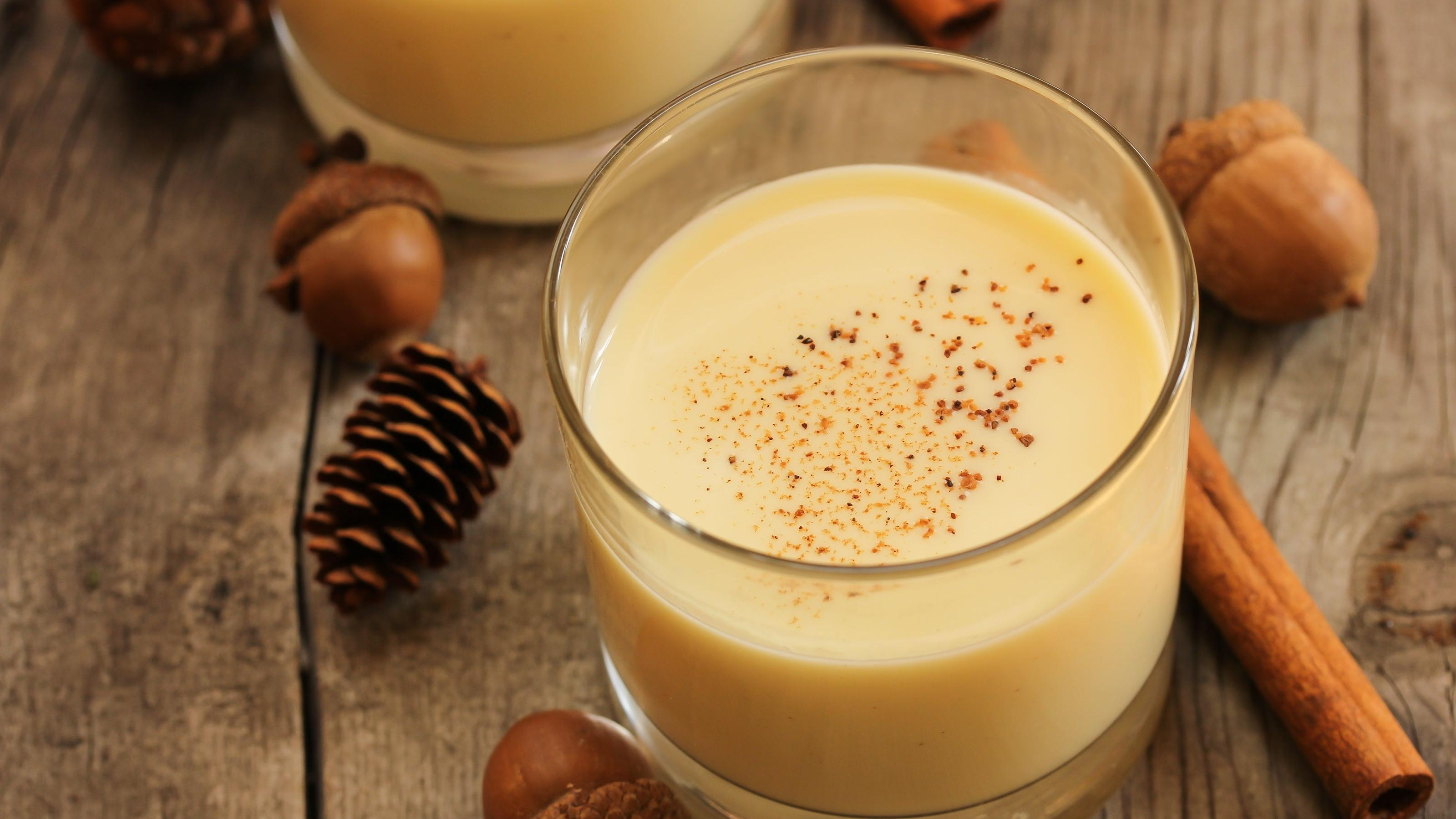Consider Crémas And Coquito, Holiday Comfort From The Caribbean Diaspora
Think beyond eggnog to these creamy, boozy holiday drinks.
As the fall turns into winter and the and the coffee shop drinks shift from pumpkin spice to gingerbread, it's also time to shift from spiked apple cider and mulled wine to other boozy holiday offerings.
I know the first drink that comes to mind is eggnog, usually followed by some serious mixed reviews. Eggnog has a longstanding presence in the holiday drink pantheon, which also comes with the unfortunate title of being mass-produced (badly) in various forms. The first eggnog I ever tried was a non-alcoholic version sold in the local Winn-Dixie, and I remembered it tasting like sad milk.
The traditional recipes seem straightforward: eggs, milk, heavy cream, sugar, and bourbon. Some recipes call for grated nutmeg; others pop in a cinnamon stick at the end almost as a swizzle stick for a little zhuzh. Unlike what we find in most mass-produced versions, eggnog is supposed to be on the thicker side—mostly due the whipped egg whites folded into the mixture—and leave you feeling warm on the inside due copious amounts of brown liquor. So if you have only run up against disappointing eggnog experiences, this is a boozy treat worth making yourself at home.
What is crémas?
If you're ready to try a new creamy, boozy drink this holiday, your first stop should be crémas. Like many other folks in the Haitian diaspora, I have a long abiding relationship with crémas. Somewhere deep in my family's many photo albums is a picture of me at a party after my first communion, flanked by two large bottles of handmade and hand-poured crémas.
I met up with a friend a few weeks back to co-work in a coffeeshop in Brooklyn, and after finding our seats she reached into her purse to pull out a party favor from her sister's baby shower, a small bottle of crémas. I may have (okay, definitely) held it in my hand like a precious gem while breaking the sound barrier with my squeals.
Crémas is not the Haitian version of eggnog. While they may both be boozy creamy holiday drinks, it kind of ends there. With the large and emphatic caveat that beloved drinks have a variety of recipes among different families, traditional Haitian crémas have some similarities, and it starts with a real coconut.
Back in the day, my mother used to grab her machete and make quick work of splitting a drained coconut into pieces, meticulously carving out the white meat from the shell. Then, she would sit me in front of a metal bowl with a multisided grater and invite me to shred. As I grew up, the pieces of coconut left un-grated got smaller and smaller, and my expectations of partaking in the libations got larger and larger.
What is coquito?
If crémas is the Haitian delicacy, coquito is its Puerto Rican cousin. My first sip of coquito was poured from an oddly familiar reused bottle into a red Solo cup at a kickback in Flatbush. While coquito is delicious, coconut- and dairy-based just like crémas, there are some marked differences between the two.
Coquito is made with Puerto Rican rum and has some differences in flavor and texture. In order to jog my memory of the drink's characteristics, I may or may not have recently bought a coquito nutcracker from an entrepreneurial lady near the park. Tasting it was like greeting a member of my extended family, familiar yet far away.
How to make crémas
As for crémas, my recipe, adopted from my mother's recipe, and her mother's before her, has no measurements but there are general instructions. It involves grating a coconut; adding Haitian rum, sugar, condensed milks, and flavoring; and much straining through cheesecloths. It's a labor of love that yields great results.
(If DIY is not in the cards for you this holiday then you're in luck: There are a few national brands, like Absalon, that ship crémas in various sizes to your home.)
As I was writing this, I FaceTimed my mom and convinced her to bring a few bags of coconut pieces from Florida in her carry-on this Christmas. I'll reprise my role as grater-in-chief and we can make our crémas at my home this year. And if I'm feeling generous, maybe I'll pour out a few mini bottles and pass it on to friends for good tidings into the new year.
Crémas recipe
- Grate a coconut on the second to smallest plane of a box grater.
- Add 2-3 cups alcohol to the grated coconut. My mom's preference, and now mine, is a mixture of white Rhum Barbancourt and Wray & Nephew rum. Let sit for 1-2 hours or overnight.
- Run your rum-and-coconut mixture through cheesecloth, leaving behind a creamy, delicious liquid and none of the coconut pieces.
- Add about 1 cup of white sugar to your rum-coconut mixture, and mix until it melts.
- Add 1 can of evaporated milk (not half and half or heavy cream) and 2 cans sweetened condensed milk.
- Flavor your mixture with nutmeg, cinnamon, vanilla extract, and almond extract.
- Optional: Add a bit of lime juice (think 1 tsp.) to help thicken your mixture.
- Not optional: Run your mixture through cheese cloth until nothing solid is left behind.
